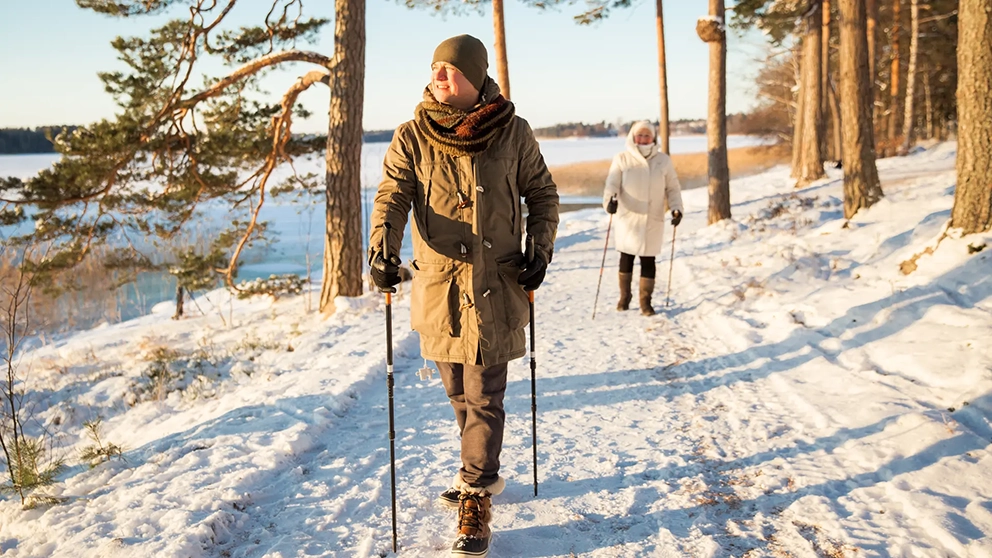Winter brings its own unique opportunities for being active. But cold weather can make it difficult to exercise, and the lack of sunlight can sap your motivation.
That’s one reason people are more likely to develop issues with cholesterol, high blood pressure and body weight during the winter — all risk factors for heart disease and stroke. Plus, snow shovelling can put unwanted stress on your heart.
The good news is that you can avoid these problems by keeping a few tips in mind.
Shovelling safely
While snow shovelling can be a great way to stay active during the cold, it is a vigorous exercise. Here’s how to stay safe and minimize your risk of injury:
- Approach with caution. Especially if you have been diagnosed with heart disease, be aware that shovelling can strain your cardiovascular system. Wearing a heart rate monitor is a good way to check how much work you’re doing. Ask a family member, friend or neighbour for help when you need it.
- Warm up. A longer warm-up is needed during cold weather. Shovel at a pace you are comfortable in.
- Choose the right shovel. There are many different types and lengths. Using a shovel with a smaller blade will reduce the chances of muscle injury. Choose a shovel height that’s right for you. If it’s too short, it will cause you to bend over and strain your back.
- Take a break. It’s important to listen to your body and get rest. Switching your hands and which side you shovel on will also give working muscles a break.
- Use proper technique. Is the snow light and fluffy, or wet and soggy? If the latter, a smaller shovel blade is ideal to keep the weight down. Keep your feet planted on the ground, one hand as close to the blade as possible and lift with your legs (don’t bend your back). Keeping the shovel close to your body will make it easier. Don’t twist your back, but move your feet to deposit the snow.
Staying active in cold weather
You may find it difficult to get the recommended 150 minutes a week of physical activity when it’s cold outdoors. These tips can help you exercise safely outdoors:
- Wear layers. They’ll work better than a thick jacket. As your body warms up, remove some clothes to adjust. Wearing a scarf or a loose-fitting mask will make it easier to breathe, especially if you have asthma.
- Focus on your warm-up. Spend some extra time warming up, as your body works harder to keep itself warm during colder temperatures.
- Don’t push too hard. Aim for a moderate level of intensity.
- Drink plenty of water. The cold dry air can dehydrate you.
- Beware of slipping. If you’re walking or running in the snow, use waterproof and non-slip shoes. A pair of walking poles will help you balance.
Caring for your mental health
You may experience winter blues (feeling down), made worse by lack of sunlight, additional stress and social isolation. Here’s how to improve your mood and feel better:
- Spend time with friends and family. Conversations can release oxytocin (the social or love hormone) that will help you feel good and reduce stress. Laughter will also release endorphins in your body, which will make you feel better.
- Exercise regularly.
- Get sufficient sleep. Adults need seven to nine hours of sleep to keep your brain and body healthy.
About the author

Dr. Scott Lear
Dr. Scott Lear is a leading researcher in the prevention and management of heart disease. He holds the Pfizer/Heart and Stroke Foundation Chair in Cardiovascular Prevention Research at St. Paul’s Hospital in Vancouver, and he is a professor in the faculty of health sciences and the department of biomedical physiology and kinesiology at Simon Fraser University. Dr. Lear also lives with heart disease himself. Follow his blog at drscottlear.com.

